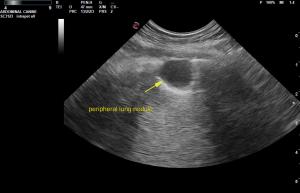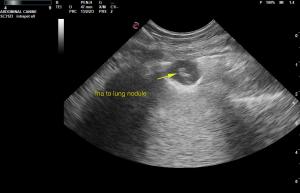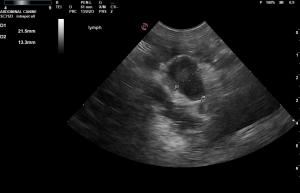Sonographic Differential Diagnosis
Neoplasia, possibly pancreatic or round cell origin with pulmonary metastasis. Fungal disease, pancreatitis and pneumonitis.
Sampling
US guided fna of the lung lesion revealed blastomycosis.
DX
Cranial abdominal lymph node or pancreatic mass. Concurrent lung nodules. Suspect sarcoma or carcinoma.
Outcome
Ultrasound-guided FNA of the lung nodules were performed without complication. FNA of the mass in the region pancreas would have been ideal in this patient. U/S-guided FNA of the lung nodule revealed blastomycosis. The patient lived in a blast-free region for > 1 year but had been adopted before that so the origin of infection was likely from prior residence in a blasto endemic region.




